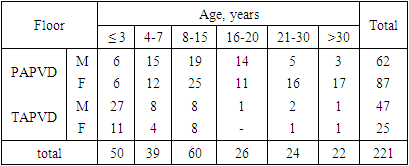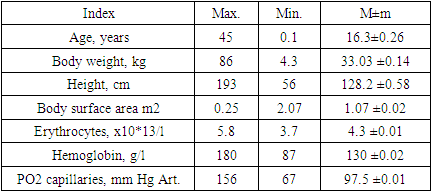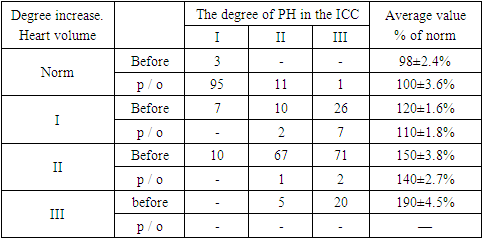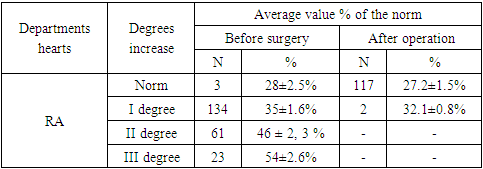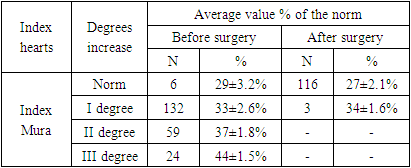| [1] | Anchabadze, G. O. The results of radical correction of the supracardial form of total anomalous pulmonary venous drainage according to the Tucker method in newborns and children of the first year of life: abstract of the thesis of Candidate of Medical Sciences: 14.01.26 - M., 2011–36. |
| [2] | Bockeria L.A., Gudkova R.G. Cardiovascular surgery. Moscow. 2016. |
| [3] | Bondarev, Yu. I., Mitina, I. N. Non-invasive ultrasound diagnosis of congenital heart defects. / Bondarev Yu. I. - M., 2004 - S. 206–300. |
| [4] | Burakovsky V.I., Bokeria L.A. Cardiovascular surgery. -M.: Medicine, 1989. pp. 100-104. |
| [5] | Degtereva, E. V. Results of radical correction of total anomalous pulmonary vein drainage // New tasks of modern medicine: materials of the III Intern. scientific conf. - St. Petersburg: Zanevskaya Square, 2014. - S. 42-44. |
| [6] | Zinkovsky M.F. Congenital heart defects. K .: Book plus. 2008. |
| [7] | Kupryashov A.A. Atrial septal defect. Partial anomalous pulmonary venous drainage. In book. Bockeria L.A., Shatalov K.V. Children's cardiac surgery. Guide for doctors. FGBU "NMITsSSH named after A.N. Bakulev" of the Ministry of Health of the Russian Federation. 2016. S. 294-312. |
| [8] | Podzolkov V.P., Kassirsky G.I. (ed.). Rehabilitation of patients after surgical treatment of congenital heart defects. M.: NTSSSH im. A.N. Bakulev. 2015. |
| [9] | Ruzmetov M.M. Long-term results of surgical treatment of abnormal pulmonary venous drainage: Abstract of the thesis. dis. …cand. honey. nauk. -M., 1993. -S. 4-15. |
| [10] | Svyazov E.A. Comparative analysis of long-term results of correction of partial anomalous drainage of the pulmonary veins into the superior vena cava // Siberian Medical Journal (Tomsk). - 2017. - T.32. -#1. |
| [11] | Svyazov EA, Krivoshchekov EV, Podoksenov A. Yu. Comparative analysis of complications after surgical correction of partial anomalous drainage of the right pulmonary veins into the superior vena cava. // CSF. 2016. №2. |
| [12] | Sobolev Yu.A. Tactical and technical features of surgical correction of anomalous confluence of the right pulmonary veins. Candidate of medical sciences diss. - N. Novgorod. 2008. |
| [13] | Falkovsky G.E., Krupyanko S.M. Heart of a child: a book for parents about congenital heart defects. - M.: Nikea, 2011. |
| [14] | Alsoufi B, Cai S, Van Arsdell GS, Williams WG, Caldarone CA, Coles JG. Outcomes after surgical treatment of children with partial anomalous pulmonary venous connection. Ann Thorac Surg. 2007; 84:2020 - 6. |
| [15] | Darling RS Rothney MB Greig JM Total anomalous pulmonary venous return into the right side of the heart. Lab.Invest. 1957 Vol. N1. P 44-64. |
| [16] | Davia G Nichols, Ross M Ungtrleider, Philipp J. Spevak,.. “Critical hetart disease in infants and Children” – Elsevier, 2010y. - 1024p. |
| [17] | Hoffman JIE, Kaplan S. The incidence of congenital heart disease. J Am Call cardiol. 2002; 39: 1890 - 900. |
| [18] | Friesen CLH, Zurakowski D., Thiagarajan RR, Forbess JM, del Nido PJ, Mayer JE, Jonas RA Total anomalous pulmonary venous connection: an analysis of current management strategies in a single institution. Ann. Thorac. Surg. 2005. 79 (Issue 2): 596–606. DOI: 10.1016/j.athoracsur. 2004.07.005. |
| [19] | Kim C. at.al. Surgery for partial anomalous pulmonary venous connections: Modifaction of the warden proctdure with a right atrial appendage flap // Korean Jurnal of Thoracic and Cardiovascular Surgery. 2014. N2(47). C.94-99. |
| [20] | Kouchoukos NT, Blackstone EH, Hanley FL, Kirklin JK Kirklin/Barratt-Boyes cardiac surgery: morphology, diagnostic criteria, natural history, techniques, results, and indications. - 4th ed. Philadelphia: Elsevier. 2013. |
| [21] | Kumar T.et.al. Pulmonary hypertension due to the presence of isolated partial anomalous puimonary venous connection: A case report // Journal of Cardiovascular Disease Research. 2013. N4(4). C.239-241. |
| [22] | Notomi Y., Srinath G., Shiota T., Martin-Miklovic MG, Beachler L., Howell K. et al. Maturational and adaptive modulation of left ventricular torsional biomechanics: Doppler tissue imaging observation from infancy to adulthood. circulation. 2006. 113: 2534-41. |
| [23] | Richard A. Jonas “Comprehensive surgical management of cjngenital heart disease” – second tducation, CRC Press, 2014 y. -704p. |
| [24] | Baseek I.V., Benken A.A., Grebinnik V.K., et al. Partial anomalous drainage of the pulmonary veins into the inferior vena cava (“Yatagan” syndrome): The role of radiological methods in the primary diagnosis and control of surgical treatment. translational medicine. Volume 7. No. 3. 2020. St. Petersburg. |
| [25] | Rabkin I.Kh. Grigoryan E.A., Azheganova G.S. X-ray cardiometry. Tashkent. The medicine. -1975. -FROM. 184. |
| [26] | Meza R., Araujo J., Escobar A. et al. Successful surgical repair of scimitar syndrome in a 38-year-old adult // Int. J. Cardiovasc. Thorac. Surg. 2019. Vol. 5, N 6. P. 80-83. |


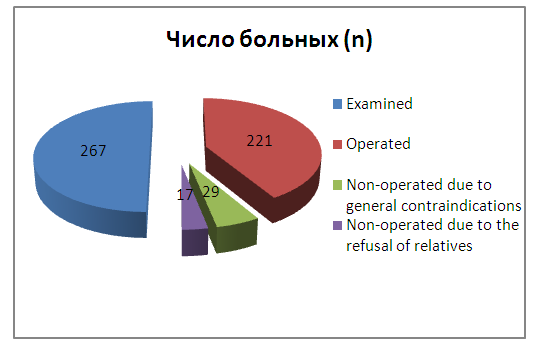
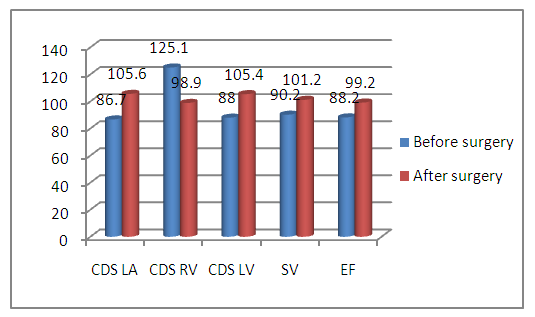

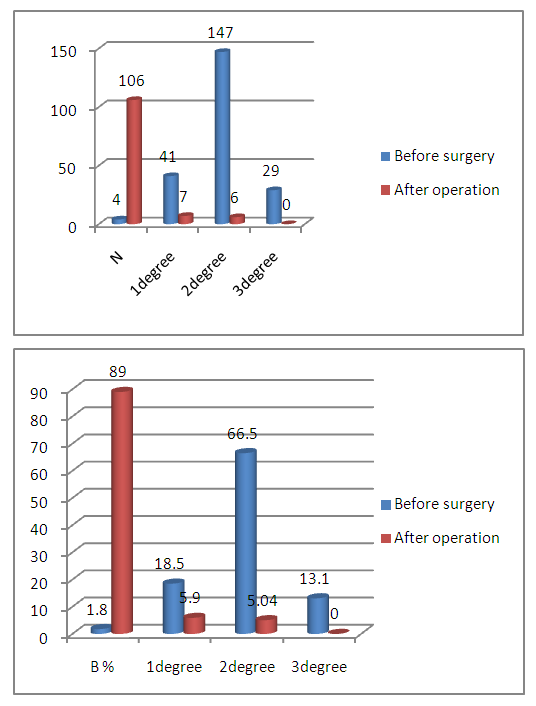
 Abstract
Abstract Reference
Reference Full-Text PDF
Full-Text PDF Full-text HTML
Full-text HTML